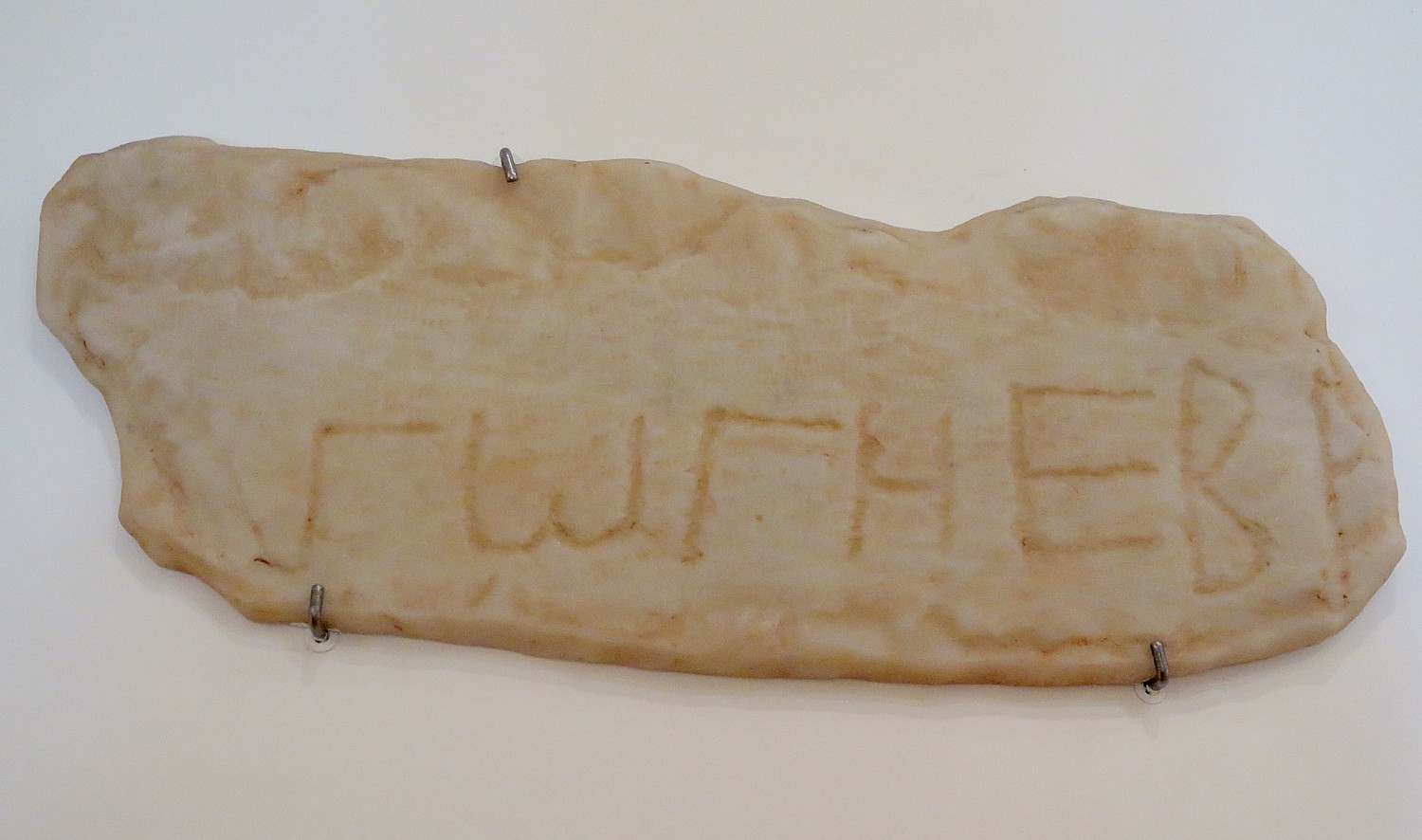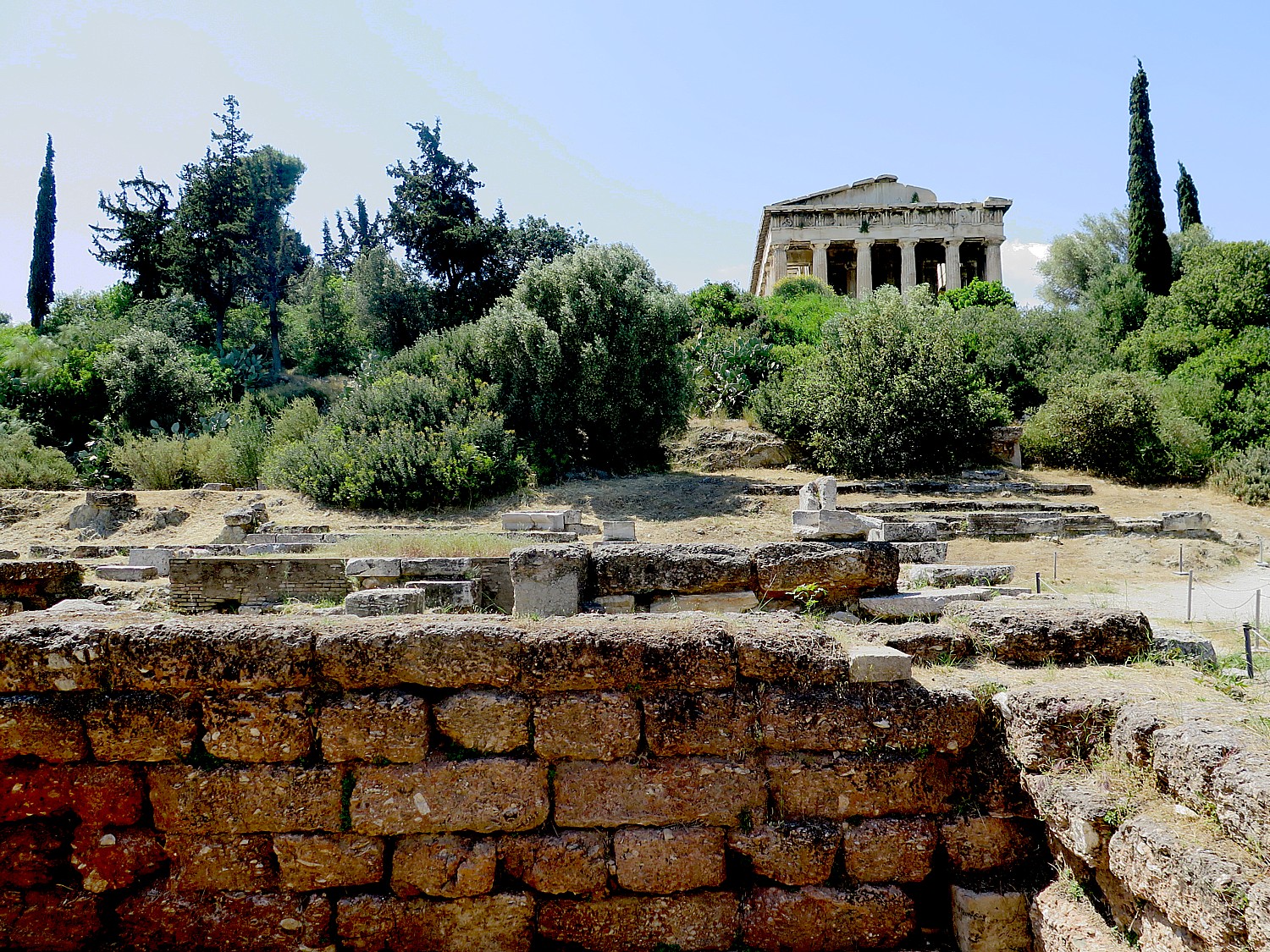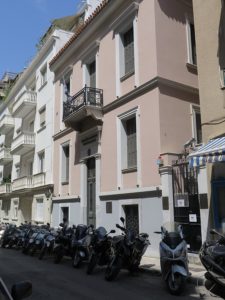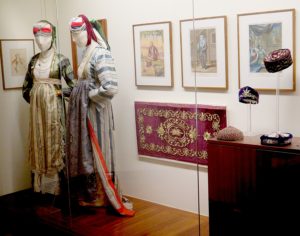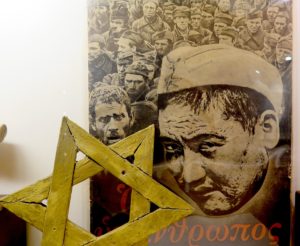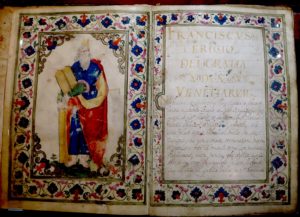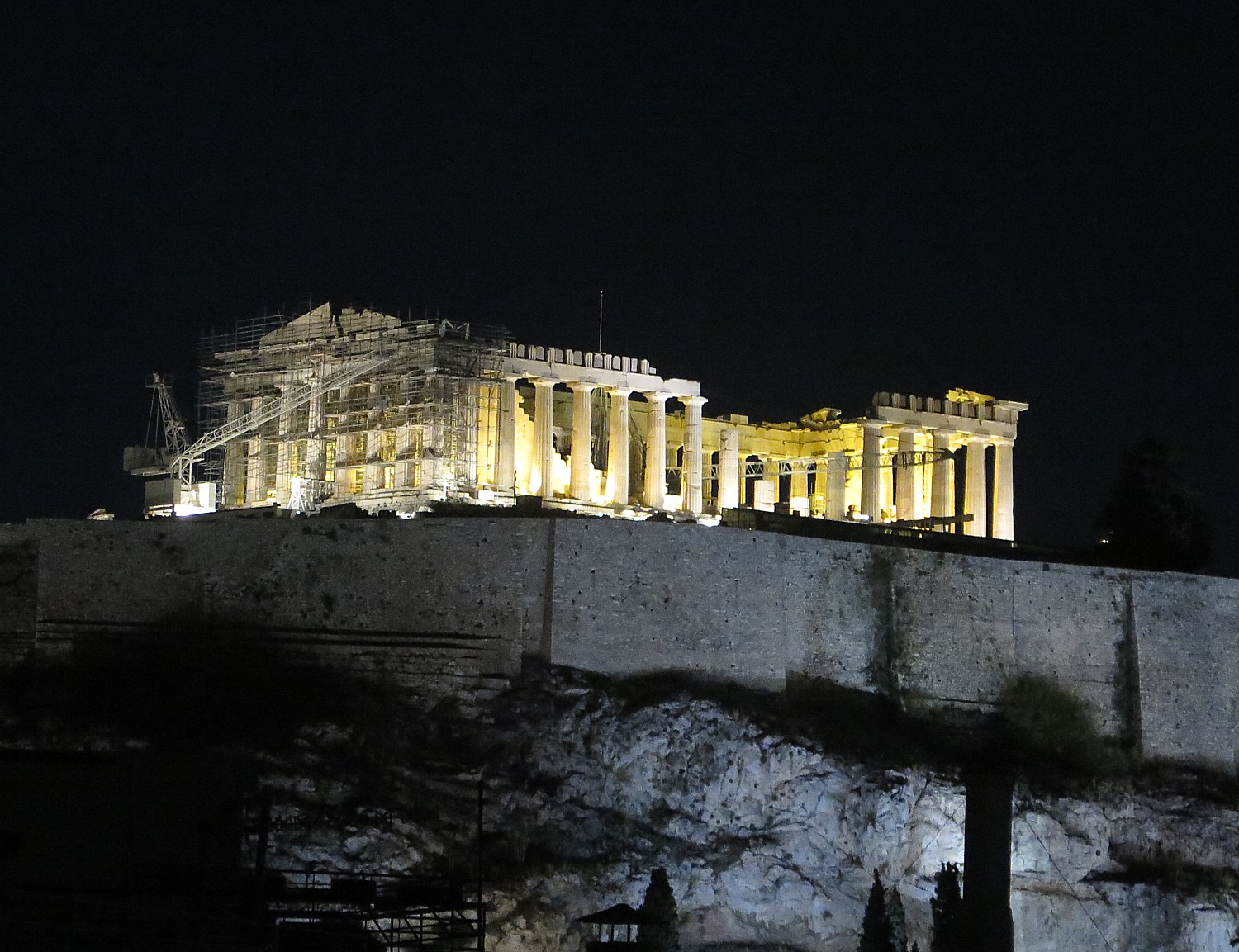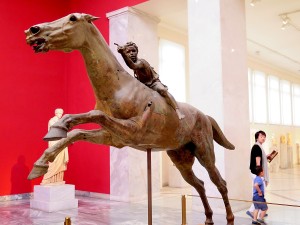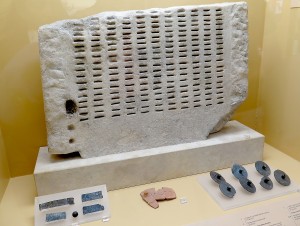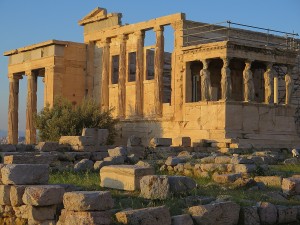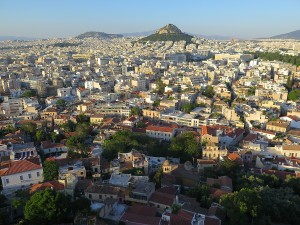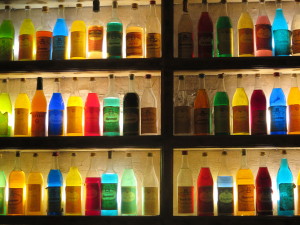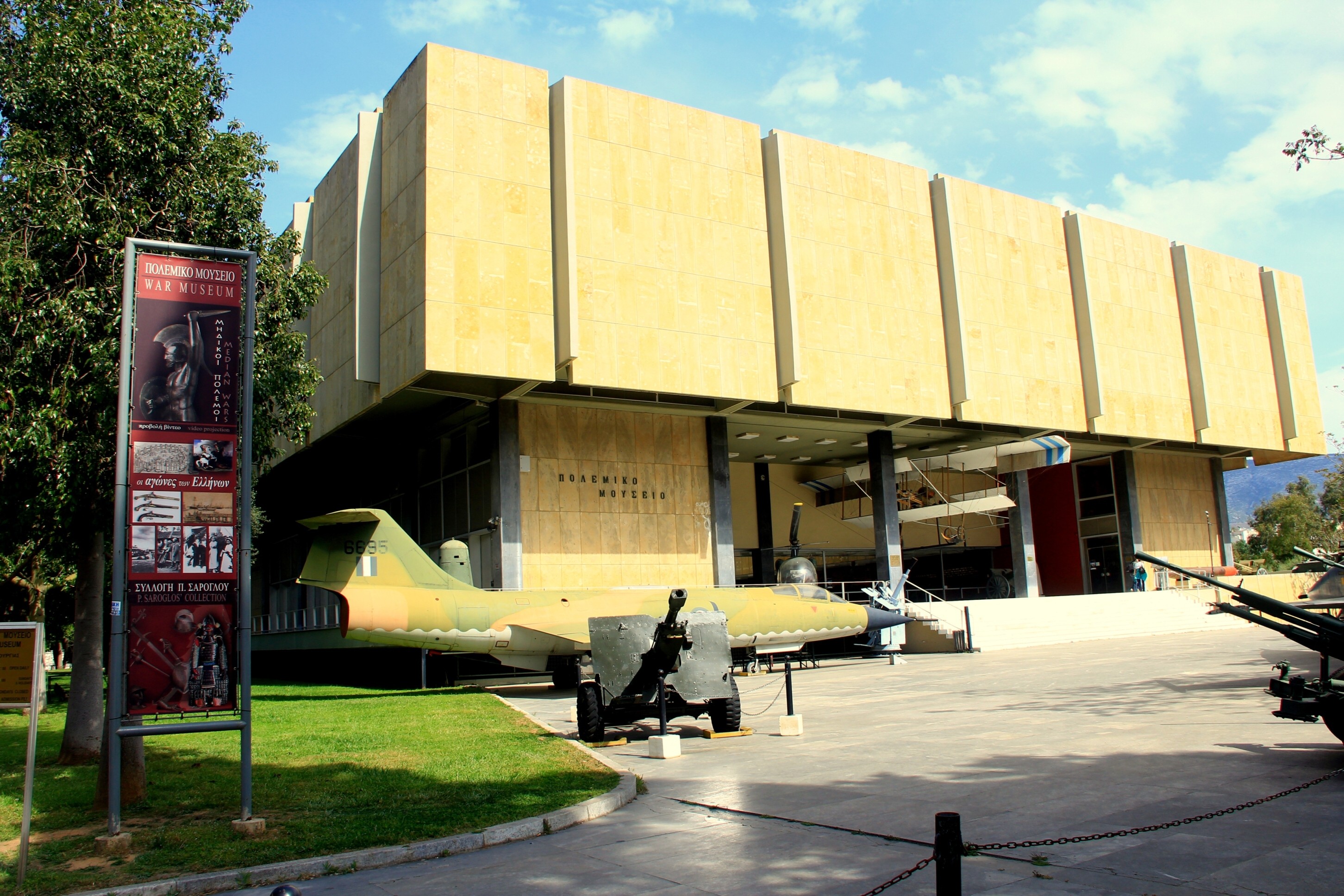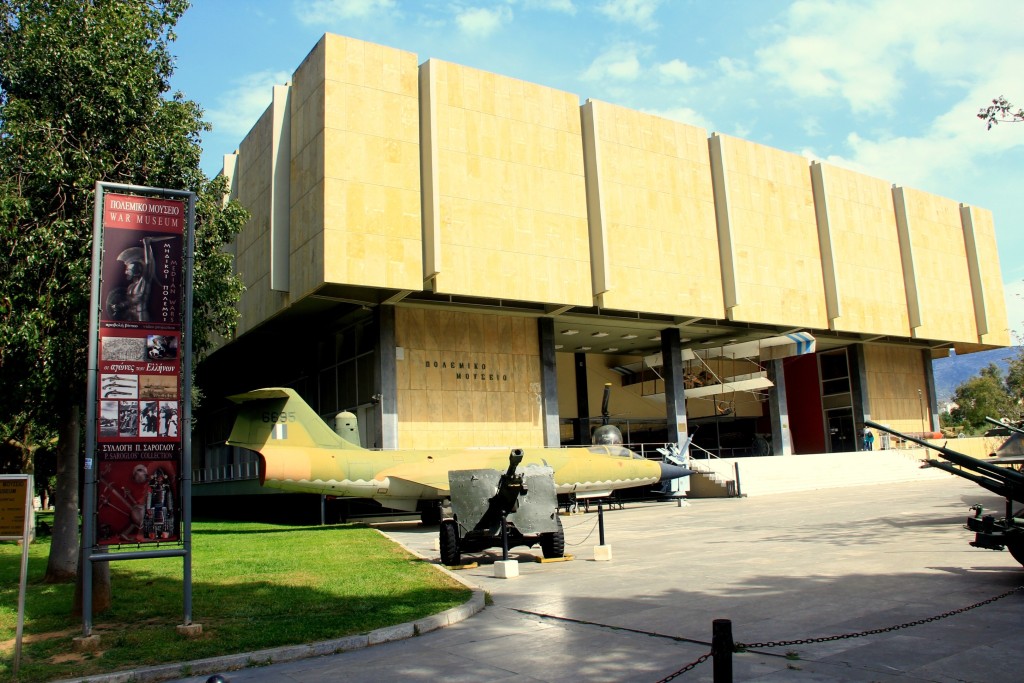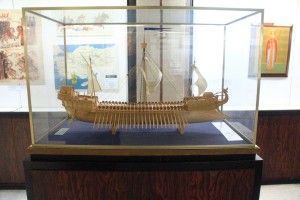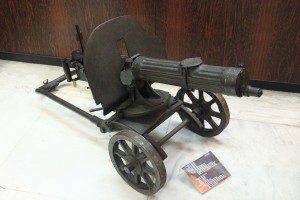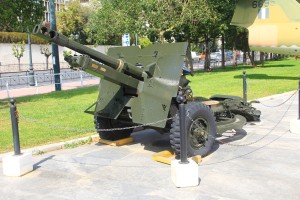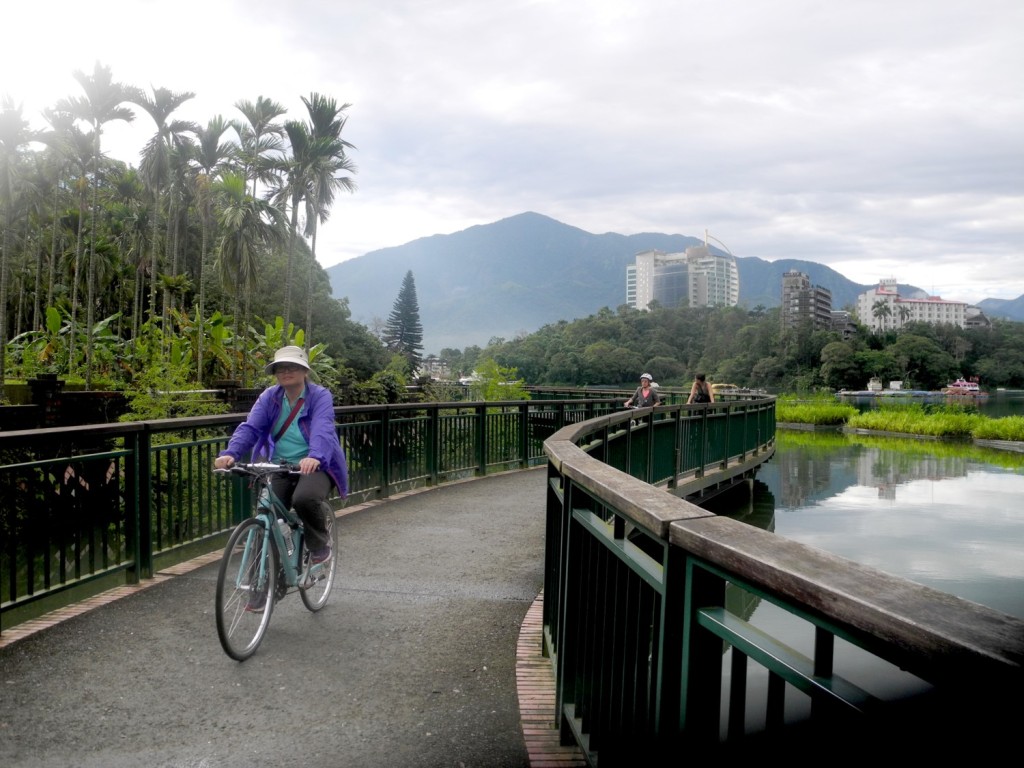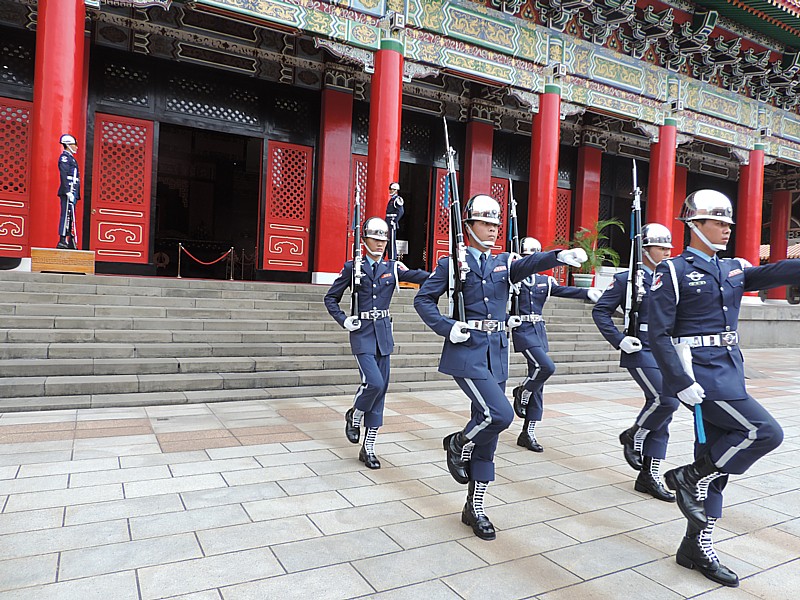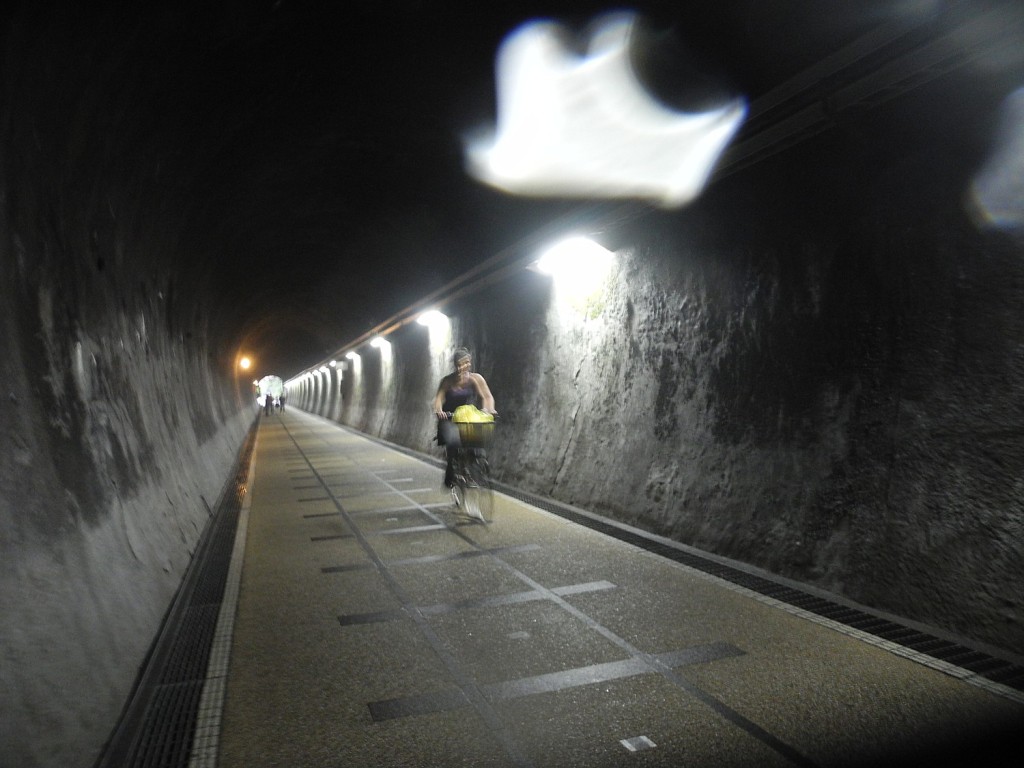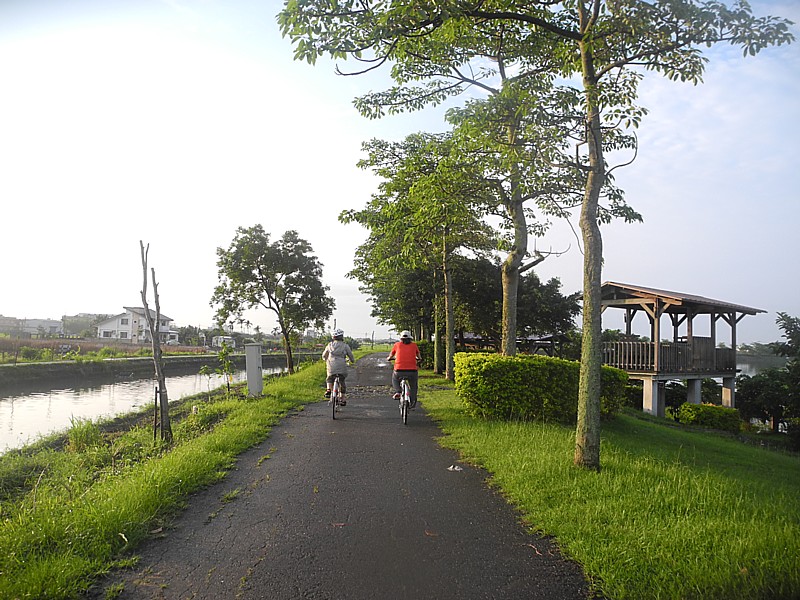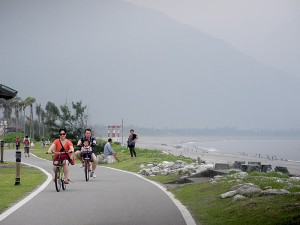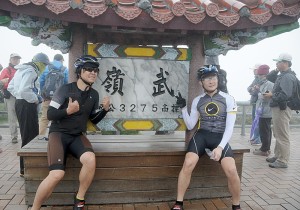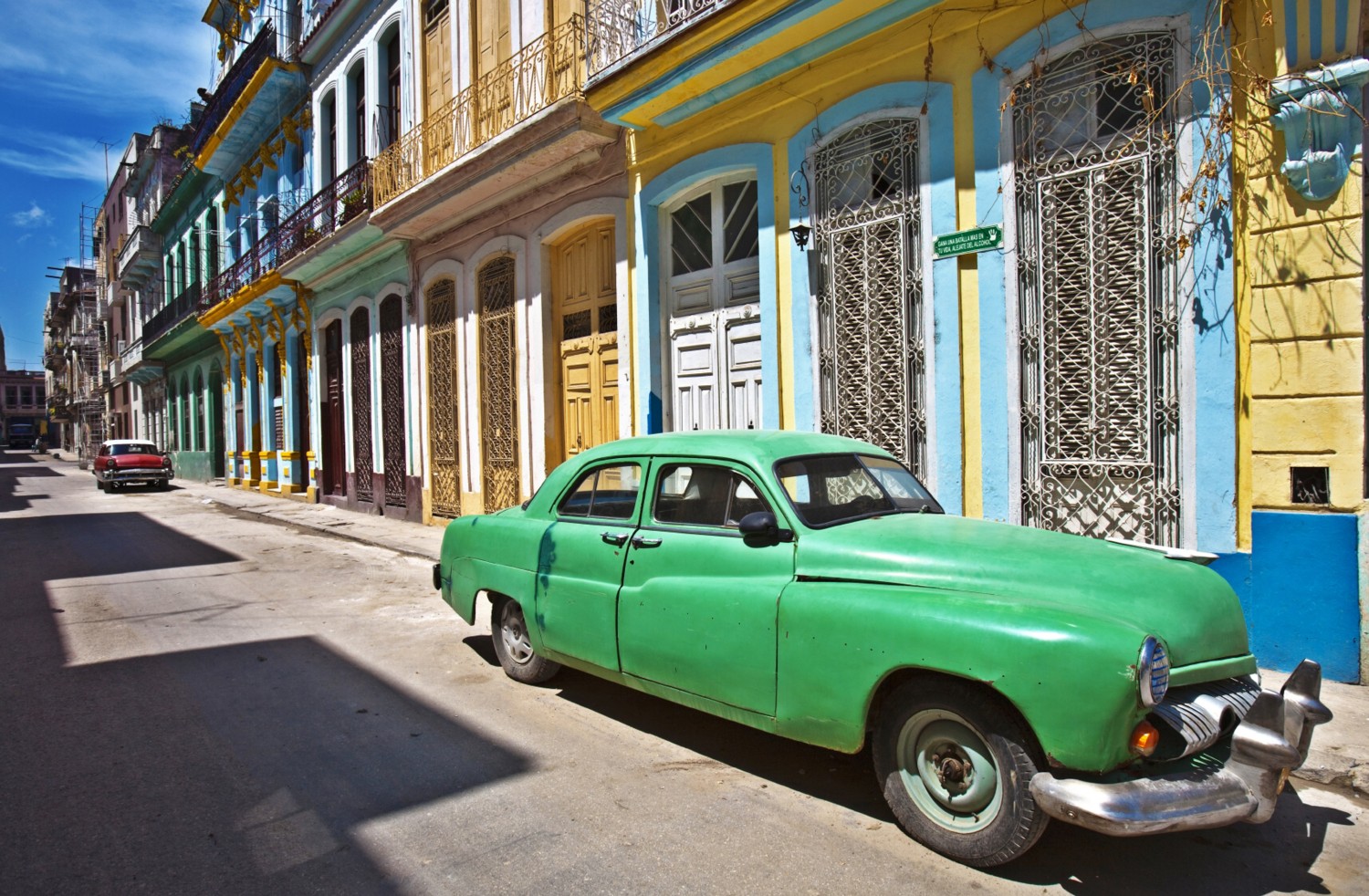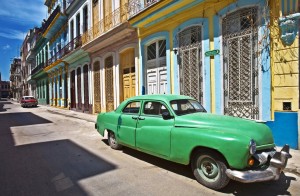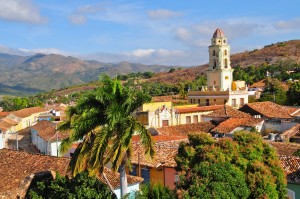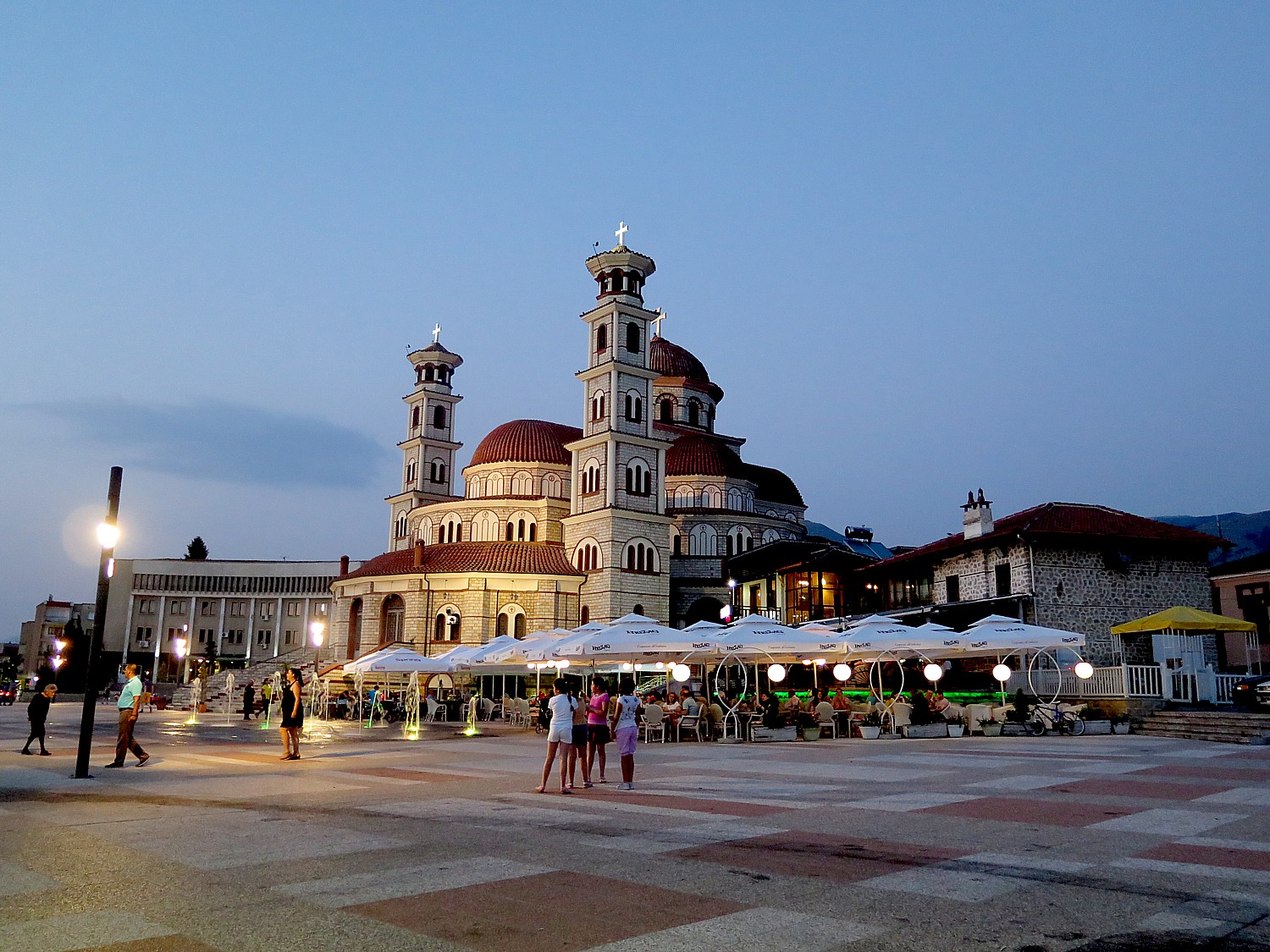
By Karen Rubin, goingplacesfarandnear.com
(I travel to Albania with BikeTours.com’s President Jim Johnson on a specially constructed “President’s Tour” itinerary that modifies the regular “Albania’s UNESCO Sites with Rivers, Valleys, and Gorges” trip.)
Day 3 of our cycling adventure (the fourth day of “Albania’s UNESCO Sites with Rivers, Valleys, and Gorges” tour) offers some of the starkest contrasts, from Albania’s rural “breadbasket” – farmland where you think you have gone back 100 years in time – to one of its most cosmopolitan and sophisticated cities, Korca, the “Paris of Albania.”

This day is marked for me with some of my favorite landscapes- stunning farms laid out like a neat patchwork quilt – that show Albania’s use of traditional agricultural techniques with little mechanization. If anything, the countryside reminds me of our Amish country, with the continued reliance on donkeys and mules, hoes and spades, and how the use of chemicals and pesticides is shunned (which is why the salads and produce we eat are so fresh and pure – talk about farm to table!).
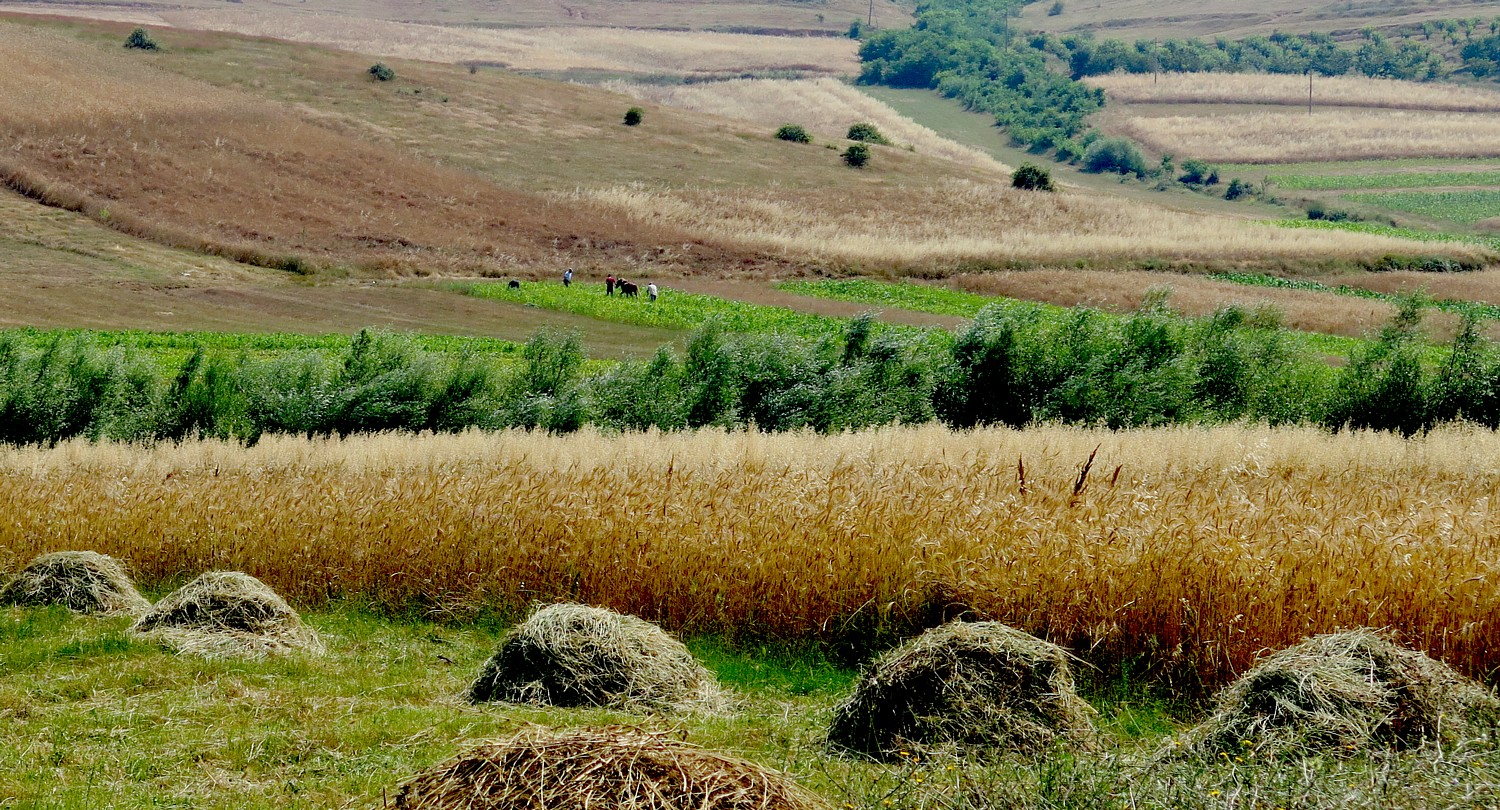
Our ride is a 51 km distance, mostly uphill with a steep climb at the beginning, and then a series of smaller climbs and drops for a total elevation gain of 412 meters and elevation loss of 252 meters.
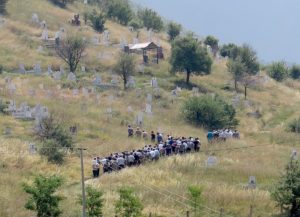
We start out of the hotel alongside Lake Ohrid, and cycle back to Pogradec, then head south and leave the plain, climbing to a higher one. We cycle the first half of the route along rural roads, looking at the vast plain of Korca from above, presenting these gorgeous painterly scenes of the farms.
As we come into one village, we see a funeral procession underway – a long line of people walking up a winding path to the hillside cemetery.

Our coffee break stop is a delightful restaurant right in the middle of the farms; Junid, our guide, brings us a watermelon to share. Lunch is in another charming restaurant, on the outskirts of Korca, where we enjoy stuffed grape leaves, beets, fries and lamb chops.
Korca: ‘The Paris of Albania’
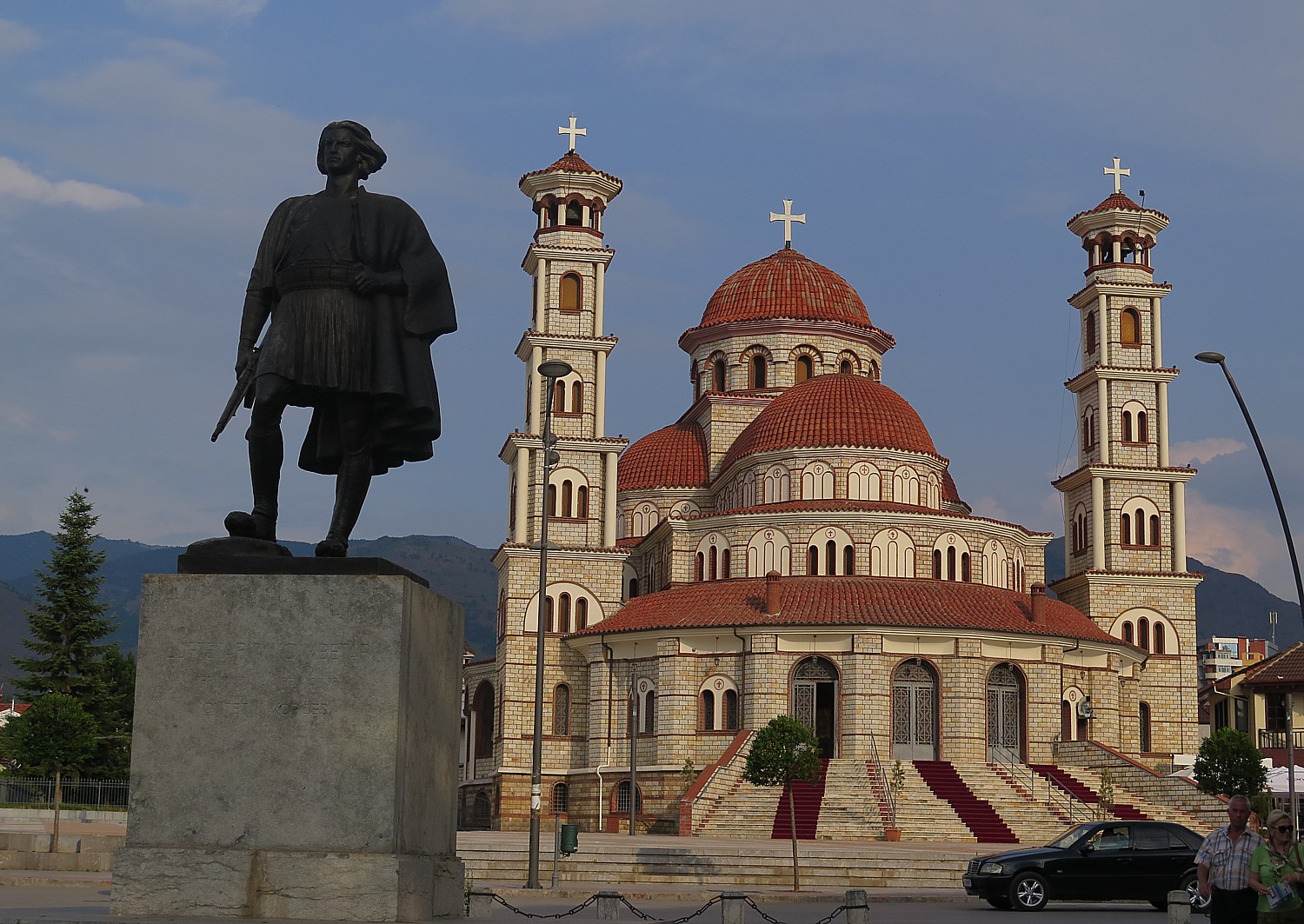
We bike into Korca and am immediately struck by sculptures that line the boulevard and some of the prettiest modern architecture we have seen, abutting turn-of-the-century French-influenced architecture (hence, the title, “The Paris of Albania”), from when the French controlled the region. We also pass a curious cemetery with crosses.
You immediately feel Korca’s more cosmopolitan cultural vibes, but the essence of Albania’s 19th century history also is on display here, all compressed in a compact walkable distance.
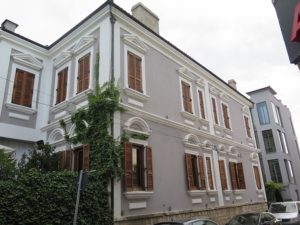
Our hotel, the Life Gallery Hotel, is, hands-down the best of the trip. It is a microcosm of Korca in that it is actually two buildings: a grand French-style building dating from 1924 and a modern, chic boutique hotel with every modern amenity imaginable (an enormous marble and granite bathroom and free WiFi), connected via an enclosed walkway and courtyard. There is a stunning beer garden, a cellar restaurant, a tavern, and even a swimming pool (and they are opening a spa).
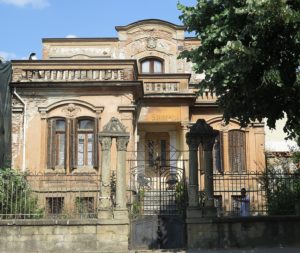
We are here early enough for me to explore on my own for an hour and a half before our group meets together for a walking tour led by our guide, Junid: the rebuilt Cathedral (largest in Albania), the First School of Albania (dating from 1887), cinema and casinos (which may actually be nightclubs) and a bazaar (closed when we come) and what passes for a small indoor shopping mall. There are also a surprising number of banks.
Indeed, Korca is one of the largest and most important cultural and economical centers of Albania and the largest city in the region. In addition to being dubbed “The Paris of Albania,” it is also known as the “cradle of Albanian culture.” Korca is named in documents dating from the early medieval period – the first half of the 15th century – when the entire province was the property of Muzakajt, one of the feudal families of that time. The city has been an important trading market: for centuries Albanian caravans began their travels from here to Turkey, Greece, and Russia. By the second half of the 19th century, the city rose to be a very important economic, trade and cultural center.
But its prime location that has made the city so important as a trading center has also brought tragedy. Albania was neutral during the Balkan Wars and World War I, yet so many battles were fought here that the country lost 10% of its population, Junid tells us.
The city also played a key role in its fight for independence from the 500-year rule of the Ottoman Empire. Korca patriots were well organized from 1906 – 1912, and took part actively in the movement to liberate the country from Ottoman occupation.
Korca enjoyed a heightened period of prosperity in the interwar period when many of its characteristic cultural institutions, mansions and boulevards were built by French and Italians.
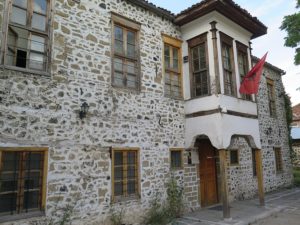
The city also offers several museums including The Education Museum (housed in the building where the first Albanian school opened in 1887), The National Museum of Medieval Art, The Prehistoric Museum, the house-museum of the famous landscape painter, Vangjush Mio, and Bratko, the museum of the Oriental Art.
Walking Tour of Korca
The city of Korca takes great pride in being a welcoming and accessible city. You can best experience this by walking through its many parks, clean streets (we see people employed as street sweepers) and characteristic cobblestone walkways and roads. Which is what we do
Junid gives us a narration of Korca’s history as we walk passed monuments and structures: he points out the graveyard of martyrs, located at the top of a hill above the city.
By happenstance of location, Korca has been the site of a lot of fighting.
After Albania declared its independence from the Ottoman Empire in 1912, after 500 years under its rule, it did not take part in the Balkan Wars of 1912-4, or in World War II – it was neutral, like Switzerland, Junid says. Nonetheless, armies marched through; Albania had an army for defense; 10% of the Albanian population died in battles fought on its soil. The numbers also include 700 French soldiers who are buried in the cemetery, marked with crosses, that we saw when we biked into the city earlier.
In 1913, Albania’s borders were “redefined” by a Council of Ambassadors (Western Europeans). Albania had started out as 58,000 sq km; but in their collective wisdom, Albania’s territory was cut down to 39,000 sq. km, with sizeable chunks given to Greece, Macedonia and Montenegro. Today, there is concern that Albania may want to recover its lost territory, but Junid says, “Nobody wants to reestablish Albania.”
From 1916-20, Korca was occupied by the French who built many of the beautiful buildings we see. The French also installed Albania’s president.
By 1930, half of Albania was occupied by Italy and the rest by Greece.
“The Dictator” (as Junid refers to him) sought help from Hitler to push out the Greeks and allied with the Italians. Mussolini saw Albania as a 300 km-wide buffer zone for its own defense. Mussolini armed and modernized Albania’s army.
We come to the Resurrection Orthodox Cathedral, the centerpiece of the city and the largest in Albania and second largest in the Balkans. It was opened in 1995.
Junid explains that in 1967, under the dictatorship of Enver Hoxha (dictator from 1944 until 1983), Albania became the first atheist country – religion was banned; priests and imans who refused to close their churches and mosques were shot and their churches and mosques burned down.

Even after Communism fell in 1991, it took a couple of more years before the people got over their fear and reopened churches and mosques. The Cathedral was built upon ruins with donations of rich families from area (they are honored inside the Cathedral). Despite the restoration of formal religion, and the fact that Muslims represent 70 percent of the country, other religions are tolerated (indeed, we see crosses topping many hilltops), the country is clearly secular, atheism is still prevalent and people consider religion a private affair.
“The religion of Albanians,” Junid tells us as we walk, “is Albanianism. First and foremost we are a nation. We all are human beings, respect each other.”
Junid gives us more of Albania’s history: he tells us that when one of the prime ministers died of heart disease (or at least that’s what they said). “Coincidentally, one of the doctors who treated him succeeded him (This reminds me of a plot of “Madam Secretary”). (I can’t reconstruct this timeline based on the list of Prime Ministers and Presidents but the only cardiologist I can find is (Sali Berisha) who became President in 1992 and later became Prime Minister, 2005-2013. Berisha was also the Prime Minister who, on 10 June 2007, met with U.S. President George W. Bush in Tirana, the first sitting U.S. president to visit Albania. But what appears to be the case is that there are a handful of politicians who move in and out of power, which accounts for a high measure of cynicism when it comes to politics.)
In 1991, a former economic adviser to Prime Minister Fatos Nano began a series of Ponzi schemes that embroiled much of the country, and when they collapsed in 1997, caused the bankruptcy of 25 firms with a face value totaled $1.2 billion and sank more than 200,000 investors who had sold off property in order to raise the capital to invest. That set off a civil war. “Almost all of Albania was burned to the ground,” Junid tells us. (What I can’t understand is why the money can’t be traced to bank accounts and recovered.)
Nanos served as Prime Minister 1997-8 (after the Ponzi schemes collapsed), was accused of corruption and remarkably, was returned to office 2002-2005, promising reforms, when new questions about corruption in government contracts emerged.
(I find it really difficult to get Albania’s history into perspective. If you look at a timeline of Albania’s prime ministers, some only served a matter of months and even days, and there was nobody in the office 1916-1918, but it also is clear that a small group of leaders dominated government for decades, switching in and out of office.)
The bottom line is that Albania’s history since 1912 independence has been one of kings, dictators, prime ministers and presidents promising reforms but rife with corruption and intrigues which led to unrest, coups and uprisings. (The current prime minister, Edi Rama, came to office in September 2013, and judging from the massive infrastructure projects underway and what I gauge is a calm in the country, seems to be putting the country’s economy back on track.
Across from the Cathedral is the promenade and a prominent “National Hero” Monument, immortalizing the freedom movement that won independence from the Ottoman Empire after a 500-year occupation. The figure wears the traditional Albanian costume with the pleated skirt (the Greeks adopted the same outfit; the more folds, the richer the man). It was sculpted in 1937 by Odhise Paskali, considered Albania’s greatest sculptor, on the occasion of the 25th anniversary of Albania’s independence.
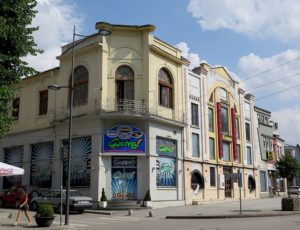
Along the promenade are important buildings – the literal ruins of a Russian Embassy (in 1957, the dictator broke off relations with Russia and allied with China) on one side, and the First Albanian School, built in 1887, which is today the National Museum of Education. Back when the school was built, under Muslim law only boys could attend, but a few years later, a girls school was built.
The promenade, Junid says, is an architectural feature common to all Albanian towns, a legacy of the Italian occupation. The promenade was designed by Mussolini’s architects in the 1930s.
Junid explains the Albanian custom of “xhiro” (sounds like “gyro”) – evening walks. Each evening after 6:30 pm, people come out and promenade down the avenues, come to cafes, sit in parks, and chat.
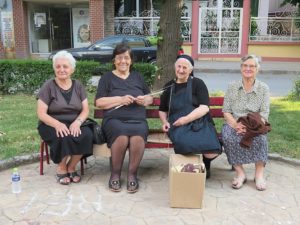
Our walking tour takes us through many neighborhoods. I note a small plaque dedicated by the Albanian American veterans of America in a park-like setting in the middle of a boulevard that is being reconstructed. We come upon a group of older women who are knitting and with Junid as translator, chat a bit.
Finally, we come to a street lined with beer gardens. We are headed for the beer garden right beside the Korca brewery (less than 70 cents for a mug of really terrific Pilsner-style beer).
Korca is Albania’s oldest brewery in Albania (since 1928), as well as the biggest (Tirana is the other major beer), supplying taverns and restaurants throughout the country (but not beyond). It is a traditional Pilsner-style wheat beer, full-flavored and quite good.
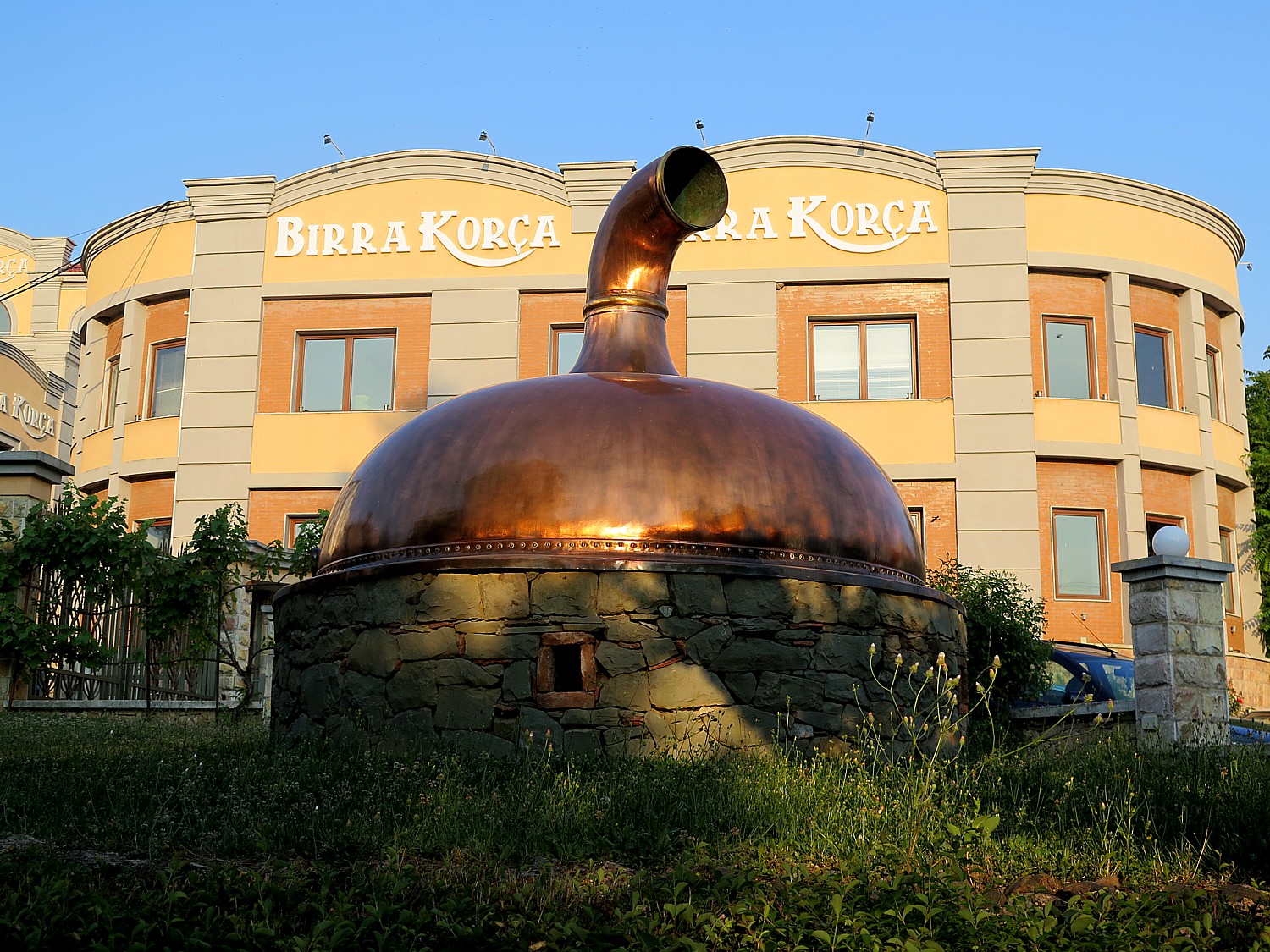
A little research uncovers that Korca has the best conditions for making beer: cereals are widely cultivated and the water is low in calcium. Under the Hoxha Communist regime, the brewery became the property of the state. The brewery was purchased in 2004 by a local investor, Irfan Hysenbelliu, who built new buildings in the traditional style and launched a new system of beer processing set-up by Czech engineers.
The beer garden is especially fun, just below a massive copper cover to what I imagine is the still.
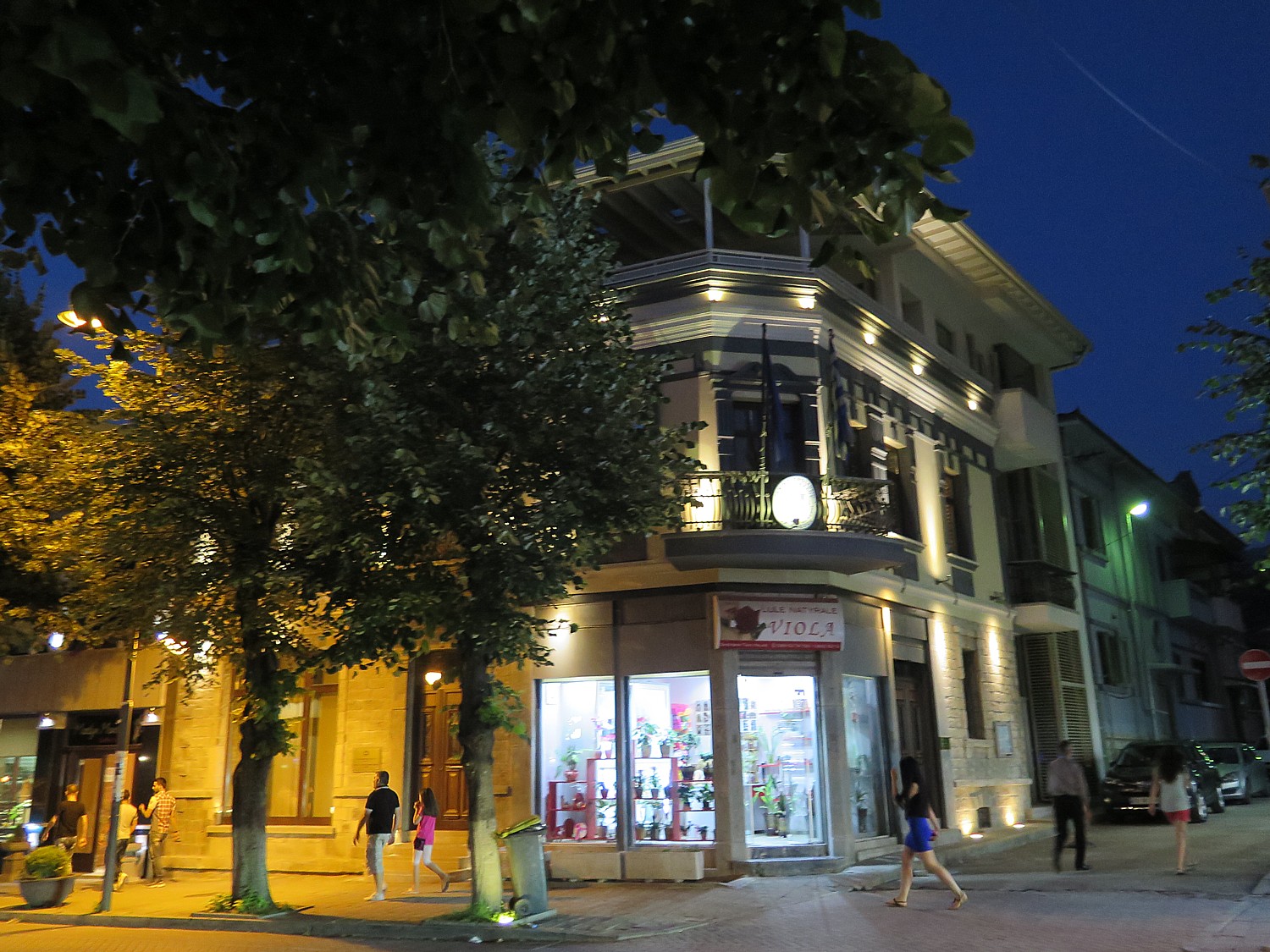
Just as Yunid promised, in the evening, the streets and promenades and cafes are crammed with people, taking part in the custom of xhiro. The feeling that emanates from the streets is absolutely marvelous.
There are still some scheduled departures left this year for “Albania’s UNESCO Sites with Rivers, Valleys, and Gorges,” 9 nights, Level 4, averaging 37 miles/day (950E or about $1050) (www.biketours.com/albania/albania-UNESCO-tour).
BikeTours.com 1-877-462-2423 or 423-756-8907, 1222 Tremont St., Suite 100, Chattanooga, TN 37405, biketours.com.
Next: Biking Albania to Gjirokaster, UNESCO World Heritage Center
See also:
Biking Albania: Exploring Heritage Sites of Lake Ohrid, St Naum, Ancient City of Ohrid
____________________
© 2016 Travel Features Syndicate, a division of Workstyles, Inc. All rights reserved. Visit goingplacesfarandnear.com and travelwritersmagazine.com/TravelFeaturesSyndicate/. Blogging at goingplacesnearandfar.wordpress.com and moralcompasstravel.info. Send comments or questions to [email protected]. Tweet @TravelFeatures. ‘Like’ us at facebook.com/NewsPhotoFeatures

